Pannonia - from the Romans to the Magyars
 In
the years 35 - 34 BC, during the first Pannonian campaign of
Octavian, the later emperor Augustus, came the local population for the
first time in contact with the troops of Rome. It took time up to the
years 13 to 9 BC until a commander of Augustus occupied the country
between the eastern Alps, the river Danube and the Save and finally
founded the new Roman province Pannonia. Around 15 AD the development
of the Roman military camp Aquincum began in the area of today's
Budapest.
The
fate of Pannonia was closely linked with that of the Roman Empire up to
the fifth century. A well-developed road system connected the
twenty-six cities and many rural settlements of the colony divided last
into four administrative districts.
In
the years 35 - 34 BC, during the first Pannonian campaign of
Octavian, the later emperor Augustus, came the local population for the
first time in contact with the troops of Rome. It took time up to the
years 13 to 9 BC until a commander of Augustus occupied the country
between the eastern Alps, the river Danube and the Save and finally
founded the new Roman province Pannonia. Around 15 AD the development
of the Roman military camp Aquincum began in the area of today's
Budapest.
The
fate of Pannonia was closely linked with that of the Roman Empire up to
the fifth century. A well-developed road system connected the
twenty-six cities and many rural settlements of the colony divided last
into four administrative districts.
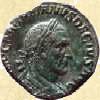 A many-peoples crowd of Roman citizens mixed with the native Erawiskers
and later also with the in the east of the Danube living
"barbarians", who used the markets, baths and theatres of
the cities during the long periods of peace. The river remained the
border of the Roman Empire. Sons and daughters of Sarmats, Teutons and
Alans established themselves again and again in the province. By the
election of the Decius, a man of Pannonian origin, to emperor in the
year 249 prosperity and stability reached a high point. Setbacks took
place later by the violent attacks during the peoples migrations and
the high points of the Christian pursuit by Emperor Diocletian.
Particularly in Aquincum already very many Christians lived. Their
priests and bishops were executed. At this time also the slow purge of
the country began. Although the emperors arranged to stop this process
by new building activities at the border fortifications, the bloom time
of Pannonia ended to finally at the beginning of the fourth century.
First
pulling through Germanic trunks afflicted the country; afterwards the
Huns fell over the country. After the large earthquake in the year 456
the East Goths occupied Pannonia - with them ended the Roman
administration. After the East Goths followed different nomads, who
sometimes already did a little agriculture apart from the cattle
breeding. Of little duration only was the presence of the Avars.
Charles the Great struck their federation around 800. After the death
of the Emperor far parts of the country separated from the Franconian
Empire. Slaves established themselves in the area and filled up the
power vacuum. Its master chieftain Svatopluk became in 9th century
prince of the Great Moravian Empire. He was vassal of the East Frankish
king Karlman. Its illegitimate son, Arnulf of Carinthia, called the
Hungarians to the assistance, in order to restore the sovereignty of
east Franconian at the east borders of the empire in the form, how it
had existed under Charles the Greate.
A many-peoples crowd of Roman citizens mixed with the native Erawiskers
and later also with the in the east of the Danube living
"barbarians", who used the markets, baths and theatres of
the cities during the long periods of peace. The river remained the
border of the Roman Empire. Sons and daughters of Sarmats, Teutons and
Alans established themselves again and again in the province. By the
election of the Decius, a man of Pannonian origin, to emperor in the
year 249 prosperity and stability reached a high point. Setbacks took
place later by the violent attacks during the peoples migrations and
the high points of the Christian pursuit by Emperor Diocletian.
Particularly in Aquincum already very many Christians lived. Their
priests and bishops were executed. At this time also the slow purge of
the country began. Although the emperors arranged to stop this process
by new building activities at the border fortifications, the bloom time
of Pannonia ended to finally at the beginning of the fourth century.
First
pulling through Germanic trunks afflicted the country; afterwards the
Huns fell over the country. After the large earthquake in the year 456
the East Goths occupied Pannonia - with them ended the Roman
administration. After the East Goths followed different nomads, who
sometimes already did a little agriculture apart from the cattle
breeding. Of little duration only was the presence of the Avars.
Charles the Great struck their federation around 800. After the death
of the Emperor far parts of the country separated from the Franconian
Empire. Slaves established themselves in the area and filled up the
power vacuum. Its master chieftain Svatopluk became in 9th century
prince of the Great Moravian Empire. He was vassal of the East Frankish
king Karlman. Its illegitimate son, Arnulf of Carinthia, called the
Hungarians to the assistance, in order to restore the sovereignty of
east Franconian at the east borders of the empire in the form, how it
had existed under Charles the Greate.
Colonisation, from the Fright of Europe to Integration
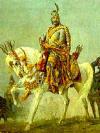 The
under the name Hungarians known trunk federation, consisting of
different peoples and tribes of Asian origin, dominated by a Hungarian
elite, lived in the east of the Carpathian Mountains and partially on
the northern Balkans at the border to Byzantium. In the area between
Dnjestr and Pruth this mixed people under the master chieftain
Árpád won first firm structures. The Hungarians became
allies of Arnulf. In the year 895 they overran the still existing Great
Moravian Empire and occupied Pannonia.
The
causes for the metamorphosis of this people are various. The Hungarian
upper class was about to orient itself at the Carolingian example.
After their raids to Spain, to the Rhine delta, to Southern Italy and
to the borders of the city Byzantium and their defeat in the year 995
on the Lechfeld in the proximity of Augsburg they decided to follow the
European model.
The
under the name Hungarians known trunk federation, consisting of
different peoples and tribes of Asian origin, dominated by a Hungarian
elite, lived in the east of the Carpathian Mountains and partially on
the northern Balkans at the border to Byzantium. In the area between
Dnjestr and Pruth this mixed people under the master chieftain
Árpád won first firm structures. The Hungarians became
allies of Arnulf. In the year 895 they overran the still existing Great
Moravian Empire and occupied Pannonia.
The
causes for the metamorphosis of this people are various. The Hungarian
upper class was about to orient itself at the Carolingian example.
After their raids to Spain, to the Rhine delta, to Southern Italy and
to the borders of the city Byzantium and their defeat in the year 995
on the Lechfeld in the proximity of Augsburg they decided to follow the
European model.
 The master chieftain Géza converted himself around 995 to
Christianity, its son Vajk was called from now István (Steven).
This one asked Pope Sylvester for a crown, in order to govern like the
other catholic rulers "from God's grace". With the coronation of
Steven in the year 1000 Hungary was integrated as state in Europe. The
choice of the Roman Catholicism and not the Byzantine form of the
Christianity was crucial for the western orientation of the new state.
Steven's second woman was Gisela of Bavaria, its successor - son
of his sister, who had married the duke of Venice - was called Pietro
Orseolo. 1102 was the neighbouring Kingdom of Croatia without rulers.
The Croatian nobility decided not to choose a new king, but joined the
kingdom of their Hungarian neighbour. Until 1918 the country formed
together with Hungary a unit - on behalf of the Turkish period.
The master chieftain Géza converted himself around 995 to
Christianity, its son Vajk was called from now István (Steven).
This one asked Pope Sylvester for a crown, in order to govern like the
other catholic rulers "from God's grace". With the coronation of
Steven in the year 1000 Hungary was integrated as state in Europe. The
choice of the Roman Catholicism and not the Byzantine form of the
Christianity was crucial for the western orientation of the new state.
Steven's second woman was Gisela of Bavaria, its successor - son
of his sister, who had married the duke of Venice - was called Pietro
Orseolo. 1102 was the neighbouring Kingdom of Croatia without rulers.
The Croatian nobility decided not to choose a new king, but joined the
kingdom of their Hungarian neighbour. Until 1918 the country formed
together with Hungary a unit - on behalf of the Turkish period.
Turbulent times and great kings
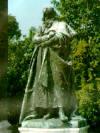 Kings
did not have a residence town around the turn of the millennium. Also
the Hungarian kings travelled around in the country. Only
Szekesfehérvár played an outstanding role as coronation
place of the rulers. But the Mongol invasion of the year 1241 required
a new structure. The villages and cities in the countryside were ruins;
Óbuda and Pest devastated by the Mongols. Scouts brought reports
over a second campaign of the Mongols. The Hungarians were now in the
same situation, in which three centuries had been before the Frankish
Empire and Bavarians. Only firm castles, roomy enough to host the
entire population of the town in an emergency, were able to defy the
riding Mongol crowds and to secure the existence of the kingdom.
Budapest began to play the role of a capital. King Béla IV (1235
- 70) did everything to establish castles and town walls. One of it
remnants can be visited also in the Somogy. The second attack of the
Mongols actually took place in the year 1285 and could be repelled.
After
the extinct of the Árpád dynasty in the year 1301 members
of the house Anjou succeeded to climb onto the Hungarian throne.
However this was no durable dynasty. Under the regency of the Bohemian
King and German Emperor Sigismund of Luxembourg (1387 - 1437) the
region was once again united, for the first time under participation of
the Hungarians. Until today architectural monuments testify
particularly in the capital of the bloom of the art in the period of
Sigismund. The gothic held a short, but strong introduction in the
country. Unfortunately the country purged to internal struggles for
power after the death of Sigismund again.
Kings
did not have a residence town around the turn of the millennium. Also
the Hungarian kings travelled around in the country. Only
Szekesfehérvár played an outstanding role as coronation
place of the rulers. But the Mongol invasion of the year 1241 required
a new structure. The villages and cities in the countryside were ruins;
Óbuda and Pest devastated by the Mongols. Scouts brought reports
over a second campaign of the Mongols. The Hungarians were now in the
same situation, in which three centuries had been before the Frankish
Empire and Bavarians. Only firm castles, roomy enough to host the
entire population of the town in an emergency, were able to defy the
riding Mongol crowds and to secure the existence of the kingdom.
Budapest began to play the role of a capital. King Béla IV (1235
- 70) did everything to establish castles and town walls. One of it
remnants can be visited also in the Somogy. The second attack of the
Mongols actually took place in the year 1285 and could be repelled.
After
the extinct of the Árpád dynasty in the year 1301 members
of the house Anjou succeeded to climb onto the Hungarian throne.
However this was no durable dynasty. Under the regency of the Bohemian
King and German Emperor Sigismund of Luxembourg (1387 - 1437) the
region was once again united, for the first time under participation of
the Hungarians. Until today architectural monuments testify
particularly in the capital of the bloom of the art in the period of
Sigismund. The gothic held a short, but strong introduction in the
country. Unfortunately the country purged to internal struggles for
power after the death of Sigismund again.
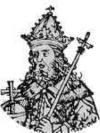
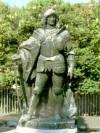 With
the inauguration of King Matthew I Corvinus (1458 - 90) the country
experienced a clear ascent after the decades of confusions again.
Matthew, grandson of a small Transsylvanian nobleman and son of
commander and Regent John Hunyadi was a large renewer. Italy was his
model; also his queen was of Italian origin. The Renaissance ruler was
a large constructor, far parts of its residence in Buda are received,
outside staircases from red marble, with relieves decorated fountain,
the noble rooms for the famous Bibliotheca Corviniana, a workshop for
sculptors, fine gardens an so on testify the power of a strong fantasy
and ability of the king. This ruler remained until today in good memory
of the people. After Matthew the luckless intermediate play of the
Jagellos followed. The armies of the Ottoman Empire, repelled by John
Hunyadi and Matthew successfully, stood further threateningly at the
southern border. Social tensions caused tumults and in the year 1514 a
farmer rebellion, leaded by Dózsa. This has been fought down
very bloody and brought the rural people practically in slavery. Louis
II Jagello, married with a Habsburg princess, led 1526 the small
Hungarian aristocrat army against the forward moving, well organised,
armed forces of the Turks and suffered a catastrophic defeat. The king
died in the battle, the army was completely reamed. Although the Turks
had been unable to occupy entire Hungary after the battle at
Mohács, Hungarians were unable to try to stop them again, nobody
was found to fight for the country again.
With
the inauguration of King Matthew I Corvinus (1458 - 90) the country
experienced a clear ascent after the decades of confusions again.
Matthew, grandson of a small Transsylvanian nobleman and son of
commander and Regent John Hunyadi was a large renewer. Italy was his
model; also his queen was of Italian origin. The Renaissance ruler was
a large constructor, far parts of its residence in Buda are received,
outside staircases from red marble, with relieves decorated fountain,
the noble rooms for the famous Bibliotheca Corviniana, a workshop for
sculptors, fine gardens an so on testify the power of a strong fantasy
and ability of the king. This ruler remained until today in good memory
of the people. After Matthew the luckless intermediate play of the
Jagellos followed. The armies of the Ottoman Empire, repelled by John
Hunyadi and Matthew successfully, stood further threateningly at the
southern border. Social tensions caused tumults and in the year 1514 a
farmer rebellion, leaded by Dózsa. This has been fought down
very bloody and brought the rural people practically in slavery. Louis
II Jagello, married with a Habsburg princess, led 1526 the small
Hungarian aristocrat army against the forward moving, well organised,
armed forces of the Turks and suffered a catastrophic defeat. The king
died in the battle, the army was completely reamed. Although the Turks
had been unable to occupy entire Hungary after the battle at
Mohács, Hungarians were unable to try to stop them again, nobody
was found to fight for the country again.
Divided country and foreign Lords
The
time of conquest was a time of extremely persistent resistance and
occurrence just as by force of the occupiers. Here a state did not only
lead a conquest war against another, like it was very usual that time,
here met most different cultures and - which was probably still more
decisive - most different religions one on the other.
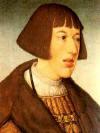 Although the Ottoman Empire was an extraordinarily highly organised
commonwealth, Hungary could not been conquered at once, even in spite
of the high-developed military apparatus. Subjecting took partially
place village for village. In other cases a vassal from the subjected
state was given the regency. Thus the voivode of Transsylvania
János Zápolya ruled also over central Hungary for the
fist time. Only after its death the Turks engaged in Budapest, although
Emperor Ferdinand tried to realise the rights of the Hungarian crown he
inherited. He succeeded only partially to get his hereditary rights. A
strip of Hungary along the border to Austria and upper Hungary, for
instance the today's Slovakia, were governed in the name of Ferdinand
from Pozsony, the today's Bratislava. In the east Hungary remained
independent, Transsylvania selected the partnership with the Ottomans.
Very
many Hungary fled into the areas, in which the Turks did not prevail,
at their place came beside many Croats, Serbs and Bosnians also
immigrants from distant parts of the Ottoman Empire. Of course in the
neuralgic places of the state apparatus loyal Turks were installed.
Dependent on those responsible persons the country was in each case
exploited or administered also for conditions of the time quite
correctly.
Although the Ottoman Empire was an extraordinarily highly organised
commonwealth, Hungary could not been conquered at once, even in spite
of the high-developed military apparatus. Subjecting took partially
place village for village. In other cases a vassal from the subjected
state was given the regency. Thus the voivode of Transsylvania
János Zápolya ruled also over central Hungary for the
fist time. Only after its death the Turks engaged in Budapest, although
Emperor Ferdinand tried to realise the rights of the Hungarian crown he
inherited. He succeeded only partially to get his hereditary rights. A
strip of Hungary along the border to Austria and upper Hungary, for
instance the today's Slovakia, were governed in the name of Ferdinand
from Pozsony, the today's Bratislava. In the east Hungary remained
independent, Transsylvania selected the partnership with the Ottomans.
Very
many Hungary fled into the areas, in which the Turks did not prevail,
at their place came beside many Croats, Serbs and Bosnians also
immigrants from distant parts of the Ottoman Empire. Of course in the
neuralgic places of the state apparatus loyal Turks were installed.
Dependent on those responsible persons the country was in each case
exploited or administered also for conditions of the time quite
correctly.
 Mainly in the large cities the Turks built an infrastructure according
to their own needs, until today witness mosques, minarets and the
famous Turkish bath houses in Budapest about it. From the Turkish
fortifications practically nothing is received. The mental life
experienced new impulses; alive is today above all still the memory of
the Turkish garden culture. Fruits and vegetables were introduced by
the Turks: peach, paprika and tomato contributed to the refinement of
the kitchen and are life no more to exclude today from the daily life -
not to mention the coffee, without which the life would be
inconceivable in Hungary.
Mainly in the large cities the Turks built an infrastructure according
to their own needs, until today witness mosques, minarets and the
famous Turkish bath houses in Budapest about it. From the Turkish
fortifications practically nothing is received. The mental life
experienced new impulses; alive is today above all still the memory of
the Turkish garden culture. Fruits and vegetables were introduced by
the Turks: peach, paprika and tomato contributed to the refinement of
the kitchen and are life no more to exclude today from the daily life -
not to mention the coffee, without which the life would be
inconceivable in Hungary.
 Why
Sultan Mohammed IV tried the conquest of Vienna is not known exactly.
Apart from interior political difficulties, from which it applied to
divert, probably the occurrence of a partisan army under Imre
Thököly, fighting against Habsburg played probably a certain
role. In the year 1683 the Ottoman army stood to the second time in
front of the gates of Vienna.
Why
Sultan Mohammed IV tried the conquest of Vienna is not known exactly.
Apart from interior political difficulties, from which it applied to
divert, probably the occurrence of a partisan army under Imre
Thököly, fighting against Habsburg played probably a certain
role. In the year 1683 the Ottoman army stood to the second time in
front of the gates of Vienna.
The Habsburgs - Liberators, Hungarian Kings or Colonists?
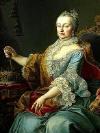 The
Turks had strongly underestimated on the one hand the military strength
of the Holy Roman Empire of German Nation on the other hand not counted
on the broad European support for the relief of Vienna. The result was
not only a destroying defeat of the Ottoman army at Vienna, but the
beginning of the end of the Turkish supremacy in the Southeast of
Central Europe. In the remaining years of that century Hungary was back
conquered completely and Habsburg stood in Belgrade. Again people
crowds were struck on escape by the conquests of the Habsburgs. Beside
the Turks settled here also very many to the Islam converted Hungarians
fled. Again whole regions were depopulated. Here the new ruler Maria
Theresia, like also her father emperor Karl before settled inhabitants
from their home countries, the Habsburgs now from their Swabian
possess. Until today those Swabians are a substantial minority in
Hungary.
The
Turks had strongly underestimated on the one hand the military strength
of the Holy Roman Empire of German Nation on the other hand not counted
on the broad European support for the relief of Vienna. The result was
not only a destroying defeat of the Ottoman army at Vienna, but the
beginning of the end of the Turkish supremacy in the Southeast of
Central Europe. In the remaining years of that century Hungary was back
conquered completely and Habsburg stood in Belgrade. Again people
crowds were struck on escape by the conquests of the Habsburgs. Beside
the Turks settled here also very many to the Islam converted Hungarians
fled. Again whole regions were depopulated. Here the new ruler Maria
Theresia, like also her father emperor Karl before settled inhabitants
from their home countries, the Habsburgs now from their Swabian
possess. Until today those Swabians are a substantial minority in
Hungary.
 The
majority of the Hungarians welcomed the new Lords from Vienna first.
There were also no problems to confirm the Habsburgs according to the
succession of 1526 as Hungarian Kings in the parliament. The Habsburgs
could be content with their Hungarians. It seemed to be fact that they
had conquered a country that laid between the Austrian home country and
the feared Turks - although their danger was banned - and apart from a
beautiful title meant a clear increase in power the in front of their
own "front door".
The
majority of the Hungarians welcomed the new Lords from Vienna first.
There were also no problems to confirm the Habsburgs according to the
succession of 1526 as Hungarian Kings in the parliament. The Habsburgs
could be content with their Hungarians. It seemed to be fact that they
had conquered a country that laid between the Austrian home country and
the feared Turks - although their danger was banned - and apart from a
beautiful title meant a clear increase in power the in front of their
own "front door".
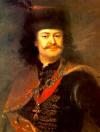 In this regard Hungary secured the supremacy of Habsburg in Germany.
However no development took place in the country. Where for faith
reasons the Calvinist Hungarians gave the ore-catholic Habsburgs little
confidence these behaved as conquerors. Where strategically fortresses
were judged as less important Habsburgs concerned rebellions and
destroyed them, to man all of them the army was not large enough. And
this concern was not without any reason. In the years 1703 to 11 Ferenc
Rákóczi tried to drive the Habsburgs out of the country
and claimed the power in Transsylvania. The Habsburgs had much more
problems with the independence fighters than with the Turks, but the
rebellions failed.
In this regard Hungary secured the supremacy of Habsburg in Germany.
However no development took place in the country. Where for faith
reasons the Calvinist Hungarians gave the ore-catholic Habsburgs little
confidence these behaved as conquerors. Where strategically fortresses
were judged as less important Habsburgs concerned rebellions and
destroyed them, to man all of them the army was not large enough. And
this concern was not without any reason. In the years 1703 to 11 Ferenc
Rákóczi tried to drive the Habsburgs out of the country
and claimed the power in Transsylvania. The Habsburgs had much more
problems with the independence fighters than with the Turks, but the
rebellions failed.
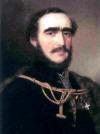 It
took one century until the country recovered from Turkish rule and the
Habsburg conquest. The period of the French revolution affected Hungary
very little only. In the 19th century was Hungary in a mental
departure. Ingenious newer of this time was count István
Széchenyi. He initiated not only the first bridging between Buda
and Pest, the famous chain bridge, but also the academy of the
sciences, he made the Iron Gate on the Danube navigable and afterwards
introduced steam shipping on the Danube and much more. The trade got
international dimensions and many factories were founded. A law from
the year 1840 permitted the free employment of trained factory workers,
thus broke the hegemony of the guilds. In the year 1831 the Pest
Commercial Hall was established, the predecessor of the goods and stock
exchange. Ten years later the Pest credit bank took up their work.
Newly opened book publishing houses, bookshops, daily papers and
magazines developed a modern oriented readership. Also the reform
eagerness and the tendency looking for a national identity grasped the
German, Jewish and Slavic parts of the middle class. Common was the
idea of a liberally Hungarian patriotism. Not only in the coffeehouses
and restaurants, in which one met, also associations were founded where
organised intellectual circles and debating club established themselves.
It
took one century until the country recovered from Turkish rule and the
Habsburg conquest. The period of the French revolution affected Hungary
very little only. In the 19th century was Hungary in a mental
departure. Ingenious newer of this time was count István
Széchenyi. He initiated not only the first bridging between Buda
and Pest, the famous chain bridge, but also the academy of the
sciences, he made the Iron Gate on the Danube navigable and afterwards
introduced steam shipping on the Danube and much more. The trade got
international dimensions and many factories were founded. A law from
the year 1840 permitted the free employment of trained factory workers,
thus broke the hegemony of the guilds. In the year 1831 the Pest
Commercial Hall was established, the predecessor of the goods and stock
exchange. Ten years later the Pest credit bank took up their work.
Newly opened book publishing houses, bookshops, daily papers and
magazines developed a modern oriented readership. Also the reform
eagerness and the tendency looking for a national identity grasped the
German, Jewish and Slavic parts of the middle class. Common was the
idea of a liberally Hungarian patriotism. Not only in the coffeehouses
and restaurants, in which one met, also associations were founded where
organised intellectual circles and debating club established themselves.
On the way to new independence
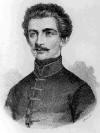 The
time of the reforms caused fundamental changes. They developed
self-dynamics being faster and stronger than the by legal meanings
permanently hindered detail-work on the change of the political system.
The tension unloaded itself to March 15h 1848. Without knowing by the
censorship authority the program of twelve points of the Pilvax circle,
a group of young intellectuals, who debated in the today still existing
coffeehouse Pilvax, and Sándor Petőfi´s poem "national
song" were published. On the stages straight of the just established
national museum recited Petőfi his poem and the twelve points
were distributed under the population.
The
time of the reforms caused fundamental changes. They developed
self-dynamics being faster and stronger than the by legal meanings
permanently hindered detail-work on the change of the political system.
The tension unloaded itself to March 15h 1848. Without knowing by the
censorship authority the program of twelve points of the Pilvax circle,
a group of young intellectuals, who debated in the today still existing
coffeehouse Pilvax, and Sándor Petőfi´s poem "national
song" were published. On the stages straight of the just established
national museum recited Petőfi his poem and the twelve points
were distributed under the population.
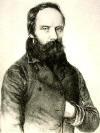 In
a period without any liberty of opinion this has been more than just a
prevail against the rulers, although compared with the excesses of
force elsewhere during the March revolutions a harmless venture. The
only direct effect was the release of the arrested Mihály
Táncsics. However some delegates of the Hungarian federal state
parliament - which still stayed in Pozsony - caught the spark and
succeeded to wrest from the emperor an own Hungarian government and to
call up a new federal state parliament to Pest. Prime Minister became
Lajos Batthyány, originating from southern Transdanubian
aristocracy.
In
a period without any liberty of opinion this has been more than just a
prevail against the rulers, although compared with the excesses of
force elsewhere during the March revolutions a harmless venture. The
only direct effect was the release of the arrested Mihály
Táncsics. However some delegates of the Hungarian federal state
parliament - which still stayed in Pozsony - caught the spark and
succeeded to wrest from the emperor an own Hungarian government and to
call up a new federal state parliament to Pest. Prime Minister became
Lajos Batthyány, originating from southern Transdanubian
aristocracy.
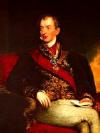
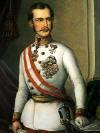 In
Vienna the Earl of Metternich ruled in the name of the mentally
deranged emperor Ferdinand II. After the Viennese congress he had
ensured in Austria that the absolutist monarchy suffocated all liberals
or revolutionary ideas completely. With the revolution in Vienna the
system Metternich fell and with it in the meantime the completely
confused monarch. Fresh blood should save the "Kaisertum"
Austria, was found it in the young crown prince Franz Joseph, who
should printed his personal stamp onto a whole epoch. At the age of 18
he climbed onto the emperor's throne in Vienna.
In
Vienna the Earl of Metternich ruled in the name of the mentally
deranged emperor Ferdinand II. After the Viennese congress he had
ensured in Austria that the absolutist monarchy suffocated all liberals
or revolutionary ideas completely. With the revolution in Vienna the
system Metternich fell and with it in the meantime the completely
confused monarch. Fresh blood should save the "Kaisertum"
Austria, was found it in the young crown prince Franz Joseph, who
should printed his personal stamp onto a whole epoch. At the age of 18
he climbed onto the emperor's throne in Vienna.

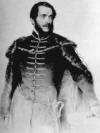 Franz
Joseph I tried to turn back the innovations, which his uncle had agreed
with under the pressure of the people. The Hungarians had a clear
answer to it, they pronounced on April 14th 1849 the Hungarian
republic. To the president they chose Lajos Kossuth. Franz Joseph did
not think about to allow the Hungary's independence. He was
unable to defeat Hungary militarily, so he called his Russian ally for
assistance, who prepared an early end to the young republic.
Sándor Petőfi died in a battle, the Prime Minister ended on the
scaffold and president Kossuth fled into Turkish exile, he died 1894 at
the age of 93 years, without being ever able to return to Hungary. The
next decades Hungary was governed centrally from Vienna, so the
national gaps in the many-peoples state grew.
Franz
Joseph I tried to turn back the innovations, which his uncle had agreed
with under the pressure of the people. The Hungarians had a clear
answer to it, they pronounced on April 14th 1849 the Hungarian
republic. To the president they chose Lajos Kossuth. Franz Joseph did
not think about to allow the Hungary's independence. He was
unable to defeat Hungary militarily, so he called his Russian ally for
assistance, who prepared an early end to the young republic.
Sándor Petőfi died in a battle, the Prime Minister ended on the
scaffold and president Kossuth fled into Turkish exile, he died 1894 at
the age of 93 years, without being ever able to return to Hungary. The
next decades Hungary was governed centrally from Vienna, so the
national gaps in the many-peoples state grew.

 It
took time until 1867 a moderate reform of the state was introduced, the
Austria-Hungarian reconciliation. Hungary received its own regional
administration and emperor Franz Joseph I accepted to be crowned king
of Hungary. The K&K monarchy was created, the chance to create a
modern many-peoples state was gone, now two peoples had a primacy - two
of sixteen. Economically Hungary experienced already since beginning of
the century a steep ascends; the depressed revolution could only shift
it a little. Just reasoned in the dependence on Austria Hungary
didn't want to stand back in the competition. Since
those days argues Hungary with the British about who has largest
parliament building of the world.
It
took time until 1867 a moderate reform of the state was introduced, the
Austria-Hungarian reconciliation. Hungary received its own regional
administration and emperor Franz Joseph I accepted to be crowned king
of Hungary. The K&K monarchy was created, the chance to create a
modern many-peoples state was gone, now two peoples had a primacy - two
of sixteen. Economically Hungary experienced already since beginning of
the century a steep ascends; the depressed revolution could only shift
it a little. Just reasoned in the dependence on Austria Hungary
didn't want to stand back in the competition. Since
those days argues Hungary with the British about who has largest
parliament building of the world.
 As
part of the double monarchy Hungary participated naturally at the side
of Austria in the First World War. Everyone might know the results.
Only days before its end Hungary proclaimed the republic for a second
time. They stood thereby in the row of states splitting off Austria.
Seen the role that Hungary in the K&K monarchy fulfilled Hungary
was seen as loser of the war by its winners, differently than for
example the Czechs and the Slovaks. With this argumentation Hungary was
back-cut onto a small main area. All regions with mixed population were
given directly to the (new) neighbour states. The once so important
Transsylvania belonged to Romania, Upperhungary is today known as
Slovakia and since the divorce from the Czechs an independent state,
the more than 800 years before voluntarily in Hungary integrated
Croatia came under the rule of Serbia, that as Kingdom of Yugoslavia
continued to exist and so on. A third of the landmass of the K&K
Hungary with approximately half of the population became actually
independent.
As
part of the double monarchy Hungary participated naturally at the side
of Austria in the First World War. Everyone might know the results.
Only days before its end Hungary proclaimed the republic for a second
time. They stood thereby in the row of states splitting off Austria.
Seen the role that Hungary in the K&K monarchy fulfilled Hungary
was seen as loser of the war by its winners, differently than for
example the Czechs and the Slovaks. With this argumentation Hungary was
back-cut onto a small main area. All regions with mixed population were
given directly to the (new) neighbour states. The once so important
Transsylvania belonged to Romania, Upperhungary is today known as
Slovakia and since the divorce from the Czechs an independent state,
the more than 800 years before voluntarily in Hungary integrated
Croatia came under the rule of Serbia, that as Kingdom of Yugoslavia
continued to exist and so on. A third of the landmass of the K&K
Hungary with approximately half of the population became actually
independent.
A new, old state looks for its way
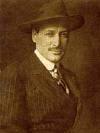 The
just proclaimed republic under the government of Mihály
Gróf Károlyi survived only a few months. Communists
actually took power in the spring 1919 and wanted to create a state
after model of the soviet republics in Russia and Bavaria. Both
Czechoslovakia and Romania saw a danger for their own countries in the
red regime in Budapest and sent their armies against the new state -
just as the Western powers did in Russia. What did not succeed in
Russia reached the allies from Prague and Bucharest, the communists
were driven out of Hungary. Royal Romanian troops occupied Budapest and
large parts of Hungary and a half-year after the beginning of the
soviet republic the country became again monarchy.
Did
Hungary become monarchy again? Karl of Habsburg, the last K&K
monarch tried to get back the Hungarian throne two times. Some would
gladly have seen him as king, others among them the new rulers of
Hungary, and the war winning powers absolutely not.
The
just proclaimed republic under the government of Mihály
Gróf Károlyi survived only a few months. Communists
actually took power in the spring 1919 and wanted to create a state
after model of the soviet republics in Russia and Bavaria. Both
Czechoslovakia and Romania saw a danger for their own countries in the
red regime in Budapest and sent their armies against the new state -
just as the Western powers did in Russia. What did not succeed in
Russia reached the allies from Prague and Bucharest, the communists
were driven out of Hungary. Royal Romanian troops occupied Budapest and
large parts of Hungary and a half-year after the beginning of the
soviet republic the country became again monarchy.
Did
Hungary become monarchy again? Karl of Habsburg, the last K&K
monarch tried to get back the Hungarian throne two times. Some would
gladly have seen him as king, others among them the new rulers of
Hungary, and the war winning powers absolutely not.
 Under those were the British the most powerful ones who did not want
the restitution. King Karl selected not to risk new fights and
abdicated. But Hungary remained monarchy - on the paper. The throne was
kept vacant. This was not inconvenient to Miklós Horthy. He was
former admiral of the K&K navy and adjutant of Franz Joseph I. He
was after the invasion of the Romanians the powerful man in the
capital. He was declared to be regent of the Empire and was thereby in
fact the head of state. He was the central person of an authoritarian
regime, which governed with the help of an elected parliament. However
this wasn't the only contradiction of the new state. The
government supported the industrialisation of the country, but did not
create the conditions of an industrial society. One looked for the
proximity and acceptance of the strengthened democracies, chose however
the new dictatorial regimes of Europe as allies.
Under those were the British the most powerful ones who did not want
the restitution. King Karl selected not to risk new fights and
abdicated. But Hungary remained monarchy - on the paper. The throne was
kept vacant. This was not inconvenient to Miklós Horthy. He was
former admiral of the K&K navy and adjutant of Franz Joseph I. He
was after the invasion of the Romanians the powerful man in the
capital. He was declared to be regent of the Empire and was thereby in
fact the head of state. He was the central person of an authoritarian
regime, which governed with the help of an elected parliament. However
this wasn't the only contradiction of the new state. The
government supported the industrialisation of the country, but did not
create the conditions of an industrial society. One looked for the
proximity and acceptance of the strengthened democracies, chose however
the new dictatorial regimes of Europe as allies.
New dependence, new departure
 Hungary
had not resigned itself to the fact that large parts of the country had
been given to other states after the First World War. One tried to
receive Transsylvania back from Romania. The German government under
Hitler became the mediator of the controversy. Transsylvania became
again Hungarian, only at which price! Hungary went actually into a new
dependence. Logically the country participated also on the side of the
Axis Powers in the Second World War. As long as Horthy remained a
faithful partner he was allowed to govern Hungary on own ideas. But
when doubts about its alliance loyalty came up Hungary was occupied
1944 by German troops. As the old Horthy undertook some months later,
at the Hungarian border stood Soviet troops and American bombs
devastated the cities, a dilettante attempt for a separate peace, he
was directly arrested by SS troops. The Arrowcruisers, a paramilitary
organisation of the urban mop, created after the model other National
Socialist racquet troops, took over the power in Budapest. Terror
prevailed in the roads of the city, which was taken by the Soviets in
the fight house for house.
Hungary
had not resigned itself to the fact that large parts of the country had
been given to other states after the First World War. One tried to
receive Transsylvania back from Romania. The German government under
Hitler became the mediator of the controversy. Transsylvania became
again Hungarian, only at which price! Hungary went actually into a new
dependence. Logically the country participated also on the side of the
Axis Powers in the Second World War. As long as Horthy remained a
faithful partner he was allowed to govern Hungary on own ideas. But
when doubts about its alliance loyalty came up Hungary was occupied
1944 by German troops. As the old Horthy undertook some months later,
at the Hungarian border stood Soviet troops and American bombs
devastated the cities, a dilettante attempt for a separate peace, he
was directly arrested by SS troops. The Arrowcruisers, a paramilitary
organisation of the urban mop, created after the model other National
Socialist racquet troops, took over the power in Budapest. Terror
prevailed in the roads of the city, which was taken by the Soviets in
the fight house for house.
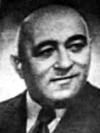 After
the war - the foreign occupation had changed - Hungarians started the
reconstruction of their country. 1946 democratic elections took place.
The party of the small farmers, agricultural workers and citizens
achieved the absolute majority, followed by the Social Democrats, the
Communist Party and the National Farmer Party. The country made itself
on the way into a new epoch and the country became again the republic
with a Calvinistic priest as president and a conservative Prime
Minister. However this time lasted not for a long while. Seen foreign
policy circumstances the situation escalated, Moscow tried to tighten
its sphere of influence. Interior politically ensured this accordingly
to tensions. As in other countries Communists and Social Democrats were
also obligation-combined. The new party dominated by
Mátyás Rákosi succeeded in relatively short time
to split up the remaining political groups of the country.
Against
prominent politicians of the not-communist majority, and in addition
even Social Democrats show processes were led.
After
the war - the foreign occupation had changed - Hungarians started the
reconstruction of their country. 1946 democratic elections took place.
The party of the small farmers, agricultural workers and citizens
achieved the absolute majority, followed by the Social Democrats, the
Communist Party and the National Farmer Party. The country made itself
on the way into a new epoch and the country became again the republic
with a Calvinistic priest as president and a conservative Prime
Minister. However this time lasted not for a long while. Seen foreign
policy circumstances the situation escalated, Moscow tried to tighten
its sphere of influence. Interior politically ensured this accordingly
to tensions. As in other countries Communists and Social Democrats were
also obligation-combined. The new party dominated by
Mátyás Rákosi succeeded in relatively short time
to split up the remaining political groups of the country.
Against
prominent politicians of the not-communist majority, and in addition
even Social Democrats show processes were led.
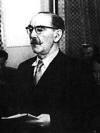 Even
the Communist Ministers László Rajk and János
Kádár became victims of the Stalinist cleanings. Rajk was
hung; Kádár condemned to life imprisonment. By force the
entire economy was expropriated, each still so small farm was
collectivised. The reconstruction of the country stagnated, the country
operated in a general mental, political, economic and human crisis.
After death of Stalin and the changed policy of Khrushchev also in
Hungary those not yet in such a way crust structures broke up. Imre
Nagy became Prime Minister. He originated from the communist party
machinery, was not however not member of the Stalinist clique around
Rákosi. This one knew however how to use the power-politics
fluctuations in the Kremlin for its own purposes. Soon Imre Nagy was
taken out of duty of his office and the bankrupt dictatorship was
continued.
Even
the Communist Ministers László Rajk and János
Kádár became victims of the Stalinist cleanings. Rajk was
hung; Kádár condemned to life imprisonment. By force the
entire economy was expropriated, each still so small farm was
collectivised. The reconstruction of the country stagnated, the country
operated in a general mental, political, economic and human crisis.
After death of Stalin and the changed policy of Khrushchev also in
Hungary those not yet in such a way crust structures broke up. Imre
Nagy became Prime Minister. He originated from the communist party
machinery, was not however not member of the Stalinist clique around
Rákosi. This one knew however how to use the power-politics
fluctuations in the Kremlin for its own purposes. Soon Imre Nagy was
taken out of duty of his office and the bankrupt dictatorship was
continued.
 The
little freedom people received was not given up. Against demonstrants
the new stalinist government wanted the Soviet Army for help. Here
against October 23rd 1956 the people rebellion begun. With Imre Nagy as
Prime Minister the government wanted to change Hungary into a
pluralistic society with multiple party system. Enterprises should
administer themselves by worker's administrations. From Warsaw
Pact withdrew Hungary. One of the most glowing fellow combatants was
from the detention-dismissed former Secretary of the Interior
János Kádár.
The
little freedom people received was not given up. Against demonstrants
the new stalinist government wanted the Soviet Army for help. Here
against October 23rd 1956 the people rebellion begun. With Imre Nagy as
Prime Minister the government wanted to change Hungary into a
pluralistic society with multiple party system. Enterprises should
administer themselves by worker's administrations. From Warsaw
Pact withdrew Hungary. One of the most glowing fellow combatants was
from the detention-dismissed former Secretary of the Interior
János Kádár.
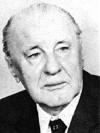 The Soviet Union did not accept this loss of a vassal state. With tanks
the peaceful revolution was down-rolled, Imre Nagy was kidnapped to
Moscow and condemned to death. It has been János
Kádár had called the Soviets for the justification of the
invasion "for assistance" to give it some kind of legal facade. Almost
logically he was set to the top of party and state. Democracy dreams
were over for long time, but also the Stalinism was finally past. After
some years Kádár loosened the regime. The command economy
was moderated; private initiatives were permitted to smaller extent.
Also with the slogan "who isn't against us is with us" socially
somewhat more liberty was granted than in the other countries behind
the iron curtain. The Goulash Communism moderated the situation, but
could not even cover the central problems.
The Soviet Union did not accept this loss of a vassal state. With tanks
the peaceful revolution was down-rolled, Imre Nagy was kidnapped to
Moscow and condemned to death. It has been János
Kádár had called the Soviets for the justification of the
invasion "for assistance" to give it some kind of legal facade. Almost
logically he was set to the top of party and state. Democracy dreams
were over for long time, but also the Stalinism was finally past. After
some years Kádár loosened the regime. The command economy
was moderated; private initiatives were permitted to smaller extent.
Also with the slogan "who isn't against us is with us" socially
somewhat more liberty was granted than in the other countries behind
the iron curtain. The Goulash Communism moderated the situation, but
could not even cover the central problems.
 With
the situation in the Soviet Union of the outgoing 80's of the last
century, which has given up the universal claim of power in favour of
social reforms and the world economic crisis all countries of the
Eastern Bloc stood before difficult solvable problems. In some states
one tried to solve the problems by force, as in Romania, in others at
the negotiating table. Hungary belonged to the second group. Reform
communists and opposition agreed on democratic elections. At this time
the experiment democracy succeeded, József Antall has been
elected to the first democratic Prime Minister. With regularity every
four years changed majority conditions and governments up to 2006. The
economy is mostly denationalised, Hungary and is by right popular among
foreign investors. Hungary, since some years member of NATO and joined
the European Union in May 2004. Even if still a lot must be caught up,
Hungary is today after many detours there where it went to one
millennium before under king Steven: integrated in the west of Europe.
With
the situation in the Soviet Union of the outgoing 80's of the last
century, which has given up the universal claim of power in favour of
social reforms and the world economic crisis all countries of the
Eastern Bloc stood before difficult solvable problems. In some states
one tried to solve the problems by force, as in Romania, in others at
the negotiating table. Hungary belonged to the second group. Reform
communists and opposition agreed on democratic elections. At this time
the experiment democracy succeeded, József Antall has been
elected to the first democratic Prime Minister. With regularity every
four years changed majority conditions and governments up to 2006. The
economy is mostly denationalised, Hungary and is by right popular among
foreign investors. Hungary, since some years member of NATO and joined
the European Union in May 2004. Even if still a lot must be caught up,
Hungary is today after many detours there where it went to one
millennium before under king Steven: integrated in the west of Europe.


 In
the years 35 - 34 BC, during the first Pannonian campaign of
Octavian, the later emperor Augustus, came the local population for the
first time in contact with the troops of Rome. It took time up to the
years 13 to 9 BC until a commander of Augustus occupied the country
between the eastern Alps, the river Danube and the Save and finally
founded the new Roman province Pannonia. Around 15 AD the development
of the Roman military camp Aquincum began in the area of today's
Budapest.
In
the years 35 - 34 BC, during the first Pannonian campaign of
Octavian, the later emperor Augustus, came the local population for the
first time in contact with the troops of Rome. It took time up to the
years 13 to 9 BC until a commander of Augustus occupied the country
between the eastern Alps, the river Danube and the Save and finally
founded the new Roman province Pannonia. Around 15 AD the development
of the Roman military camp Aquincum began in the area of today's
Budapest.
 A many-peoples crowd of Roman citizens mixed with the native Erawiskers
and later also with the in the east of the Danube living
"barbarians", who used the markets, baths and theatres of
the cities during the long periods of peace. The river remained the
border of the Roman Empire. Sons and daughters of Sarmats, Teutons and
Alans established themselves again and again in the province. By the
election of the Decius, a man of Pannonian origin, to emperor in the
year 249 prosperity and stability reached a high point. Setbacks took
place later by the violent attacks during the peoples migrations and
the high points of the Christian pursuit by Emperor Diocletian.
Particularly in Aquincum already very many Christians lived. Their
priests and bishops were executed. At this time also the slow purge of
the country began. Although the emperors arranged to stop this process
by new building activities at the border fortifications, the bloom time
of Pannonia ended to finally at the beginning of the fourth century.
A many-peoples crowd of Roman citizens mixed with the native Erawiskers
and later also with the in the east of the Danube living
"barbarians", who used the markets, baths and theatres of
the cities during the long periods of peace. The river remained the
border of the Roman Empire. Sons and daughters of Sarmats, Teutons and
Alans established themselves again and again in the province. By the
election of the Decius, a man of Pannonian origin, to emperor in the
year 249 prosperity and stability reached a high point. Setbacks took
place later by the violent attacks during the peoples migrations and
the high points of the Christian pursuit by Emperor Diocletian.
Particularly in Aquincum already very many Christians lived. Their
priests and bishops were executed. At this time also the slow purge of
the country began. Although the emperors arranged to stop this process
by new building activities at the border fortifications, the bloom time
of Pannonia ended to finally at the beginning of the fourth century.
 The
under the name Hungarians known trunk federation, consisting of
different peoples and tribes of Asian origin, dominated by a Hungarian
elite, lived in the east of the Carpathian Mountains and partially on
the northern Balkans at the border to Byzantium. In the area between
Dnjestr and Pruth this mixed people under the master chieftain
Árpád won first firm structures. The Hungarians became
allies of Arnulf. In the year 895 they overran the still existing Great
Moravian Empire and occupied Pannonia.
The
under the name Hungarians known trunk federation, consisting of
different peoples and tribes of Asian origin, dominated by a Hungarian
elite, lived in the east of the Carpathian Mountains and partially on
the northern Balkans at the border to Byzantium. In the area between
Dnjestr and Pruth this mixed people under the master chieftain
Árpád won first firm structures. The Hungarians became
allies of Arnulf. In the year 895 they overran the still existing Great
Moravian Empire and occupied Pannonia.
 The master chieftain Géza converted himself around 995 to
Christianity, its son Vajk was called from now István (Steven).
This one asked Pope Sylvester for a crown, in order to govern like the
other catholic rulers "from God's grace". With the coronation of
Steven in the year 1000 Hungary was integrated as state in Europe. The
choice of the Roman Catholicism and not the Byzantine form of the
Christianity was crucial for the western orientation of the new state.
Steven's second woman was Gisela of Bavaria, its successor - son
of his sister, who had married the duke of Venice - was called Pietro
Orseolo. 1102 was the neighbouring Kingdom of Croatia without rulers.
The Croatian nobility decided not to choose a new king, but joined the
kingdom of their Hungarian neighbour. Until 1918 the country formed
together with Hungary a unit - on behalf of the Turkish period.
The master chieftain Géza converted himself around 995 to
Christianity, its son Vajk was called from now István (Steven).
This one asked Pope Sylvester for a crown, in order to govern like the
other catholic rulers "from God's grace". With the coronation of
Steven in the year 1000 Hungary was integrated as state in Europe. The
choice of the Roman Catholicism and not the Byzantine form of the
Christianity was crucial for the western orientation of the new state.
Steven's second woman was Gisela of Bavaria, its successor - son
of his sister, who had married the duke of Venice - was called Pietro
Orseolo. 1102 was the neighbouring Kingdom of Croatia without rulers.
The Croatian nobility decided not to choose a new king, but joined the
kingdom of their Hungarian neighbour. Until 1918 the country formed
together with Hungary a unit - on behalf of the Turkish period.
 Kings
did not have a residence town around the turn of the millennium. Also
the Hungarian kings travelled around in the country. Only
Szekesfehérvár played an outstanding role as coronation
place of the rulers. But the Mongol invasion of the year 1241 required
a new structure. The villages and cities in the countryside were ruins;
Óbuda and Pest devastated by the Mongols. Scouts brought reports
over a second campaign of the Mongols. The Hungarians were now in the
same situation, in which three centuries had been before the Frankish
Empire and Bavarians. Only firm castles, roomy enough to host the
entire population of the town in an emergency, were able to defy the
riding Mongol crowds and to secure the existence of the kingdom.
Budapest began to play the role of a capital. King Béla IV (1235
- 70) did everything to establish castles and town walls. One of it
remnants can be visited also in the Somogy. The second attack of the
Mongols actually took place in the year 1285 and could be repelled.
Kings
did not have a residence town around the turn of the millennium. Also
the Hungarian kings travelled around in the country. Only
Szekesfehérvár played an outstanding role as coronation
place of the rulers. But the Mongol invasion of the year 1241 required
a new structure. The villages and cities in the countryside were ruins;
Óbuda and Pest devastated by the Mongols. Scouts brought reports
over a second campaign of the Mongols. The Hungarians were now in the
same situation, in which three centuries had been before the Frankish
Empire and Bavarians. Only firm castles, roomy enough to host the
entire population of the town in an emergency, were able to defy the
riding Mongol crowds and to secure the existence of the kingdom.
Budapest began to play the role of a capital. King Béla IV (1235
- 70) did everything to establish castles and town walls. One of it
remnants can be visited also in the Somogy. The second attack of the
Mongols actually took place in the year 1285 and could be repelled.

 With
the inauguration of King Matthew I Corvinus (1458 - 90) the country
experienced a clear ascent after the decades of confusions again.
Matthew, grandson of a small Transsylvanian nobleman and son of
commander and Regent John Hunyadi was a large renewer. Italy was his
model; also his queen was of Italian origin. The Renaissance ruler was
a large constructor, far parts of its residence in Buda are received,
outside staircases from red marble, with relieves decorated fountain,
the noble rooms for the famous Bibliotheca Corviniana, a workshop for
sculptors, fine gardens an so on testify the power of a strong fantasy
and ability of the king. This ruler remained until today in good memory
of the people. After Matthew the luckless intermediate play of the
Jagellos followed. The armies of the Ottoman Empire, repelled by John
Hunyadi and Matthew successfully, stood further threateningly at the
southern border. Social tensions caused tumults and in the year 1514 a
farmer rebellion, leaded by Dózsa. This has been fought down
very bloody and brought the rural people practically in slavery. Louis
II Jagello, married with a Habsburg princess, led 1526 the small
Hungarian aristocrat army against the forward moving, well organised,
armed forces of the Turks and suffered a catastrophic defeat. The king
died in the battle, the army was completely reamed. Although the Turks
had been unable to occupy entire Hungary after the battle at
Mohács, Hungarians were unable to try to stop them again, nobody
was found to fight for the country again.
With
the inauguration of King Matthew I Corvinus (1458 - 90) the country
experienced a clear ascent after the decades of confusions again.
Matthew, grandson of a small Transsylvanian nobleman and son of
commander and Regent John Hunyadi was a large renewer. Italy was his
model; also his queen was of Italian origin. The Renaissance ruler was
a large constructor, far parts of its residence in Buda are received,
outside staircases from red marble, with relieves decorated fountain,
the noble rooms for the famous Bibliotheca Corviniana, a workshop for
sculptors, fine gardens an so on testify the power of a strong fantasy
and ability of the king. This ruler remained until today in good memory
of the people. After Matthew the luckless intermediate play of the
Jagellos followed. The armies of the Ottoman Empire, repelled by John
Hunyadi and Matthew successfully, stood further threateningly at the
southern border. Social tensions caused tumults and in the year 1514 a
farmer rebellion, leaded by Dózsa. This has been fought down
very bloody and brought the rural people practically in slavery. Louis
II Jagello, married with a Habsburg princess, led 1526 the small
Hungarian aristocrat army against the forward moving, well organised,
armed forces of the Turks and suffered a catastrophic defeat. The king
died in the battle, the army was completely reamed. Although the Turks
had been unable to occupy entire Hungary after the battle at
Mohács, Hungarians were unable to try to stop them again, nobody
was found to fight for the country again.
 Although the Ottoman Empire was an extraordinarily highly organised
commonwealth, Hungary could not been conquered at once, even in spite
of the high-developed military apparatus. Subjecting took partially
place village for village. In other cases a vassal from the subjected
state was given the regency. Thus the voivode of Transsylvania
János Zápolya ruled also over central Hungary for the
fist time. Only after its death the Turks engaged in Budapest, although
Emperor Ferdinand tried to realise the rights of the Hungarian crown he
inherited. He succeeded only partially to get his hereditary rights. A
strip of Hungary along the border to Austria and upper Hungary, for
instance the today's Slovakia, were governed in the name of Ferdinand
from Pozsony, the today's Bratislava. In the east Hungary remained
independent, Transsylvania selected the partnership with the Ottomans.
Although the Ottoman Empire was an extraordinarily highly organised
commonwealth, Hungary could not been conquered at once, even in spite
of the high-developed military apparatus. Subjecting took partially
place village for village. In other cases a vassal from the subjected
state was given the regency. Thus the voivode of Transsylvania
János Zápolya ruled also over central Hungary for the
fist time. Only after its death the Turks engaged in Budapest, although
Emperor Ferdinand tried to realise the rights of the Hungarian crown he
inherited. He succeeded only partially to get his hereditary rights. A
strip of Hungary along the border to Austria and upper Hungary, for
instance the today's Slovakia, were governed in the name of Ferdinand
from Pozsony, the today's Bratislava. In the east Hungary remained
independent, Transsylvania selected the partnership with the Ottomans.
 Mainly in the large cities the Turks built an infrastructure according
to their own needs, until today witness mosques, minarets and the
famous Turkish bath houses in Budapest about it. From the Turkish
fortifications practically nothing is received. The mental life
experienced new impulses; alive is today above all still the memory of
the Turkish garden culture. Fruits and vegetables were introduced by
the Turks: peach, paprika and tomato contributed to the refinement of
the kitchen and are life no more to exclude today from the daily life -
not to mention the coffee, without which the life would be
inconceivable in Hungary.
Mainly in the large cities the Turks built an infrastructure according
to their own needs, until today witness mosques, minarets and the
famous Turkish bath houses in Budapest about it. From the Turkish
fortifications practically nothing is received. The mental life
experienced new impulses; alive is today above all still the memory of
the Turkish garden culture. Fruits and vegetables were introduced by
the Turks: peach, paprika and tomato contributed to the refinement of
the kitchen and are life no more to exclude today from the daily life -
not to mention the coffee, without which the life would be
inconceivable in Hungary.
 Why
Sultan Mohammed IV tried the conquest of Vienna is not known exactly.
Apart from interior political difficulties, from which it applied to
divert, probably the occurrence of a partisan army under Imre
Thököly, fighting against Habsburg played probably a certain
role. In the year 1683 the Ottoman army stood to the second time in
front of the gates of Vienna.
Why
Sultan Mohammed IV tried the conquest of Vienna is not known exactly.
Apart from interior political difficulties, from which it applied to
divert, probably the occurrence of a partisan army under Imre
Thököly, fighting against Habsburg played probably a certain
role. In the year 1683 the Ottoman army stood to the second time in
front of the gates of Vienna.
 The
Turks had strongly underestimated on the one hand the military strength
of the Holy Roman Empire of German Nation on the other hand not counted
on the broad European support for the relief of Vienna. The result was
not only a destroying defeat of the Ottoman army at Vienna, but the
beginning of the end of the Turkish supremacy in the Southeast of
Central Europe. In the remaining years of that century Hungary was back
conquered completely and Habsburg stood in Belgrade. Again people
crowds were struck on escape by the conquests of the Habsburgs. Beside
the Turks settled here also very many to the Islam converted Hungarians
fled. Again whole regions were depopulated. Here the new ruler Maria
Theresia, like also her father emperor Karl before settled inhabitants
from their home countries, the Habsburgs now from their Swabian
possess. Until today those Swabians are a substantial minority in
Hungary.
The
Turks had strongly underestimated on the one hand the military strength
of the Holy Roman Empire of German Nation on the other hand not counted
on the broad European support for the relief of Vienna. The result was
not only a destroying defeat of the Ottoman army at Vienna, but the
beginning of the end of the Turkish supremacy in the Southeast of
Central Europe. In the remaining years of that century Hungary was back
conquered completely and Habsburg stood in Belgrade. Again people
crowds were struck on escape by the conquests of the Habsburgs. Beside
the Turks settled here also very many to the Islam converted Hungarians
fled. Again whole regions were depopulated. Here the new ruler Maria
Theresia, like also her father emperor Karl before settled inhabitants
from their home countries, the Habsburgs now from their Swabian
possess. Until today those Swabians are a substantial minority in
Hungary.
 The
majority of the Hungarians welcomed the new Lords from Vienna first.
There were also no problems to confirm the Habsburgs according to the
succession of 1526 as Hungarian Kings in the parliament. The Habsburgs
could be content with their Hungarians. It seemed to be fact that they
had conquered a country that laid between the Austrian home country and
the feared Turks - although their danger was banned - and apart from a
beautiful title meant a clear increase in power the in front of their
own "front door".
The
majority of the Hungarians welcomed the new Lords from Vienna first.
There were also no problems to confirm the Habsburgs according to the
succession of 1526 as Hungarian Kings in the parliament. The Habsburgs
could be content with their Hungarians. It seemed to be fact that they
had conquered a country that laid between the Austrian home country and
the feared Turks - although their danger was banned - and apart from a
beautiful title meant a clear increase in power the in front of their
own "front door".
 In this regard Hungary secured the supremacy of Habsburg in Germany.
However no development took place in the country. Where for faith
reasons the Calvinist Hungarians gave the ore-catholic Habsburgs little
confidence these behaved as conquerors. Where strategically fortresses
were judged as less important Habsburgs concerned rebellions and
destroyed them, to man all of them the army was not large enough. And
this concern was not without any reason. In the years 1703 to 11 Ferenc
Rákóczi tried to drive the Habsburgs out of the country
and claimed the power in Transsylvania. The Habsburgs had much more
problems with the independence fighters than with the Turks, but the
rebellions failed.
In this regard Hungary secured the supremacy of Habsburg in Germany.
However no development took place in the country. Where for faith
reasons the Calvinist Hungarians gave the ore-catholic Habsburgs little
confidence these behaved as conquerors. Where strategically fortresses
were judged as less important Habsburgs concerned rebellions and
destroyed them, to man all of them the army was not large enough. And
this concern was not without any reason. In the years 1703 to 11 Ferenc
Rákóczi tried to drive the Habsburgs out of the country
and claimed the power in Transsylvania. The Habsburgs had much more
problems with the independence fighters than with the Turks, but the
rebellions failed.
 It
took one century until the country recovered from Turkish rule and the
Habsburg conquest. The period of the French revolution affected Hungary
very little only. In the 19th century was Hungary in a mental
departure. Ingenious newer of this time was count István
Széchenyi. He initiated not only the first bridging between Buda
and Pest, the famous chain bridge, but also the academy of the
sciences, he made the Iron Gate on the Danube navigable and afterwards
introduced steam shipping on the Danube and much more. The trade got
international dimensions and many factories were founded. A law from
the year 1840 permitted the free employment of trained factory workers,
thus broke the hegemony of the guilds. In the year 1831 the Pest
Commercial Hall was established, the predecessor of the goods and stock
exchange. Ten years later the Pest credit bank took up their work.
Newly opened book publishing houses, bookshops, daily papers and
magazines developed a modern oriented readership. Also the reform
eagerness and the tendency looking for a national identity grasped the
German, Jewish and Slavic parts of the middle class. Common was the
idea of a liberally Hungarian patriotism. Not only in the coffeehouses
and restaurants, in which one met, also associations were founded where
organised intellectual circles and debating club established themselves.
It
took one century until the country recovered from Turkish rule and the
Habsburg conquest. The period of the French revolution affected Hungary
very little only. In the 19th century was Hungary in a mental
departure. Ingenious newer of this time was count István
Széchenyi. He initiated not only the first bridging between Buda
and Pest, the famous chain bridge, but also the academy of the
sciences, he made the Iron Gate on the Danube navigable and afterwards
introduced steam shipping on the Danube and much more. The trade got
international dimensions and many factories were founded. A law from
the year 1840 permitted the free employment of trained factory workers,
thus broke the hegemony of the guilds. In the year 1831 the Pest
Commercial Hall was established, the predecessor of the goods and stock
exchange. Ten years later the Pest credit bank took up their work.
Newly opened book publishing houses, bookshops, daily papers and
magazines developed a modern oriented readership. Also the reform
eagerness and the tendency looking for a national identity grasped the
German, Jewish and Slavic parts of the middle class. Common was the
idea of a liberally Hungarian patriotism. Not only in the coffeehouses
and restaurants, in which one met, also associations were founded where
organised intellectual circles and debating club established themselves.
 The
time of the reforms caused fundamental changes. They developed
self-dynamics being faster and stronger than the by legal meanings
permanently hindered detail-work on the change of the political system.
The tension unloaded itself to March 15h 1848. Without knowing by the
censorship authority the program of twelve points of the Pilvax circle,
a group of young intellectuals, who debated in the today still existing
coffeehouse Pilvax, and Sándor Petőfi´s poem "national
song" were published. On the stages straight of the just established
national museum recited Petőfi his poem and the twelve points
were distributed under the population.
The
time of the reforms caused fundamental changes. They developed
self-dynamics being faster and stronger than the by legal meanings
permanently hindered detail-work on the change of the political system.
The tension unloaded itself to March 15h 1848. Without knowing by the
censorship authority the program of twelve points of the Pilvax circle,
a group of young intellectuals, who debated in the today still existing
coffeehouse Pilvax, and Sándor Petőfi´s poem "national
song" were published. On the stages straight of the just established
national museum recited Petőfi his poem and the twelve points
were distributed under the population.
 In
a period without any liberty of opinion this has been more than just a
prevail against the rulers, although compared with the excesses of
force elsewhere during the March revolutions a harmless venture. The
only direct effect was the release of the arrested Mihály
Táncsics. However some delegates of the Hungarian federal state
parliament - which still stayed in Pozsony - caught the spark and
succeeded to wrest from the emperor an own Hungarian government and to
call up a new federal state parliament to Pest. Prime Minister became
Lajos Batthyány, originating from southern Transdanubian
aristocracy.
In
a period without any liberty of opinion this has been more than just a
prevail against the rulers, although compared with the excesses of
force elsewhere during the March revolutions a harmless venture. The
only direct effect was the release of the arrested Mihály
Táncsics. However some delegates of the Hungarian federal state
parliament - which still stayed in Pozsony - caught the spark and
succeeded to wrest from the emperor an own Hungarian government and to
call up a new federal state parliament to Pest. Prime Minister became
Lajos Batthyány, originating from southern Transdanubian
aristocracy.

 In
Vienna the Earl of Metternich ruled in the name of the mentally
deranged emperor Ferdinand II. After the Viennese congress he had
ensured in Austria that the absolutist monarchy suffocated all liberals
or revolutionary ideas completely. With the revolution in Vienna the
system Metternich fell and with it in the meantime the completely
confused monarch. Fresh blood should save the "Kaisertum"
Austria, was found it in the young crown prince Franz Joseph, who
should printed his personal stamp onto a whole epoch. At the age of 18
he climbed onto the emperor's throne in Vienna.
In
Vienna the Earl of Metternich ruled in the name of the mentally
deranged emperor Ferdinand II. After the Viennese congress he had
ensured in Austria that the absolutist monarchy suffocated all liberals
or revolutionary ideas completely. With the revolution in Vienna the
system Metternich fell and with it in the meantime the completely
confused monarch. Fresh blood should save the "Kaisertum"
Austria, was found it in the young crown prince Franz Joseph, who
should printed his personal stamp onto a whole epoch. At the age of 18
he climbed onto the emperor's throne in Vienna.

 Franz
Joseph I tried to turn back the innovations, which his uncle had agreed
with under the pressure of the people. The Hungarians had a clear
answer to it, they pronounced on April 14th 1849 the Hungarian
republic. To the president they chose Lajos Kossuth. Franz Joseph did
not think about to allow the Hungary's independence. He was
unable to defeat Hungary militarily, so he called his Russian ally for
assistance, who prepared an early end to the young republic.
Sándor Petőfi died in a battle, the Prime Minister ended on the
scaffold and president Kossuth fled into Turkish exile, he died 1894 at
the age of 93 years, without being ever able to return to Hungary. The
next decades Hungary was governed centrally from Vienna, so the
national gaps in the many-peoples state grew.
Franz
Joseph I tried to turn back the innovations, which his uncle had agreed
with under the pressure of the people. The Hungarians had a clear
answer to it, they pronounced on April 14th 1849 the Hungarian
republic. To the president they chose Lajos Kossuth. Franz Joseph did
not think about to allow the Hungary's independence. He was
unable to defeat Hungary militarily, so he called his Russian ally for
assistance, who prepared an early end to the young republic.
Sándor Petőfi died in a battle, the Prime Minister ended on the
scaffold and president Kossuth fled into Turkish exile, he died 1894 at
the age of 93 years, without being ever able to return to Hungary. The
next decades Hungary was governed centrally from Vienna, so the
national gaps in the many-peoples state grew.

 It
took time until 1867 a moderate reform of the state was introduced, the
Austria-Hungarian reconciliation. Hungary received its own regional
administration and emperor Franz Joseph I accepted to be crowned king
of Hungary. The K&K monarchy was created, the chance to create a
modern many-peoples state was gone, now two peoples had a primacy - two
of sixteen. Economically Hungary experienced already since beginning of
the century a steep ascends; the depressed revolution could only shift
it a little. Just reasoned in the dependence on Austria Hungary
didn't want to stand back in the competition. Since
those days argues Hungary with the British about who has largest
parliament building of the world.
It
took time until 1867 a moderate reform of the state was introduced, the
Austria-Hungarian reconciliation. Hungary received its own regional
administration and emperor Franz Joseph I accepted to be crowned king
of Hungary. The K&K monarchy was created, the chance to create a
modern many-peoples state was gone, now two peoples had a primacy - two
of sixteen. Economically Hungary experienced already since beginning of
the century a steep ascends; the depressed revolution could only shift
it a little. Just reasoned in the dependence on Austria Hungary
didn't want to stand back in the competition. Since
those days argues Hungary with the British about who has largest
parliament building of the world.
 As
part of the double monarchy Hungary participated naturally at the side
of Austria in the First World War. Everyone might know the results.
Only days before its end Hungary proclaimed the republic for a second
time. They stood thereby in the row of states splitting off Austria.
Seen the role that Hungary in the K&K monarchy fulfilled Hungary
was seen as loser of the war by its winners, differently than for
example the Czechs and the Slovaks. With this argumentation Hungary was
back-cut onto a small main area. All regions with mixed population were
given directly to the (new) neighbour states. The once so important
Transsylvania belonged to Romania, Upperhungary is today known as
Slovakia and since the divorce from the Czechs an independent state,
the more than 800 years before voluntarily in Hungary integrated
Croatia came under the rule of Serbia, that as Kingdom of Yugoslavia
continued to exist and so on. A third of the landmass of the K&K
Hungary with approximately half of the population became actually
independent.
As
part of the double monarchy Hungary participated naturally at the side
of Austria in the First World War. Everyone might know the results.
Only days before its end Hungary proclaimed the republic for a second
time. They stood thereby in the row of states splitting off Austria.
Seen the role that Hungary in the K&K monarchy fulfilled Hungary
was seen as loser of the war by its winners, differently than for
example the Czechs and the Slovaks. With this argumentation Hungary was
back-cut onto a small main area. All regions with mixed population were
given directly to the (new) neighbour states. The once so important
Transsylvania belonged to Romania, Upperhungary is today known as
Slovakia and since the divorce from the Czechs an independent state,
the more than 800 years before voluntarily in Hungary integrated
Croatia came under the rule of Serbia, that as Kingdom of Yugoslavia
continued to exist and so on. A third of the landmass of the K&K
Hungary with approximately half of the population became actually
independent.
 The
just proclaimed republic under the government of Mihály
Gróf Károlyi survived only a few months. Communists
actually took power in the spring 1919 and wanted to create a state
after model of the soviet republics in Russia and Bavaria. Both
Czechoslovakia and Romania saw a danger for their own countries in the
red regime in Budapest and sent their armies against the new state -
just as the Western powers did in Russia. What did not succeed in
Russia reached the allies from Prague and Bucharest, the communists
were driven out of Hungary. Royal Romanian troops occupied Budapest and
large parts of Hungary and a half-year after the beginning of the
soviet republic the country became again monarchy.
The
just proclaimed republic under the government of Mihály
Gróf Károlyi survived only a few months. Communists
actually took power in the spring 1919 and wanted to create a state
after model of the soviet republics in Russia and Bavaria. Both
Czechoslovakia and Romania saw a danger for their own countries in the
red regime in Budapest and sent their armies against the new state -
just as the Western powers did in Russia. What did not succeed in
Russia reached the allies from Prague and Bucharest, the communists
were driven out of Hungary. Royal Romanian troops occupied Budapest and
large parts of Hungary and a half-year after the beginning of the
soviet republic the country became again monarchy.
 Under those were the British the most powerful ones who did not want
the restitution. King Karl selected not to risk new fights and
abdicated. But Hungary remained monarchy - on the paper. The throne was
kept vacant. This was not inconvenient to Miklós Horthy. He was
former admiral of the K&K navy and adjutant of Franz Joseph I. He
was after the invasion of the Romanians the powerful man in the
capital. He was declared to be regent of the Empire and was thereby in
fact the head of state. He was the central person of an authoritarian
regime, which governed with the help of an elected parliament. However
this wasn't the only contradiction of the new state. The
government supported the industrialisation of the country, but did not
create the conditions of an industrial society. One looked for the
proximity and acceptance of the strengthened democracies, chose however
the new dictatorial regimes of Europe as allies.
Under those were the British the most powerful ones who did not want
the restitution. King Karl selected not to risk new fights and
abdicated. But Hungary remained monarchy - on the paper. The throne was
kept vacant. This was not inconvenient to Miklós Horthy. He was
former admiral of the K&K navy and adjutant of Franz Joseph I. He
was after the invasion of the Romanians the powerful man in the
capital. He was declared to be regent of the Empire and was thereby in
fact the head of state. He was the central person of an authoritarian
regime, which governed with the help of an elected parliament. However
this wasn't the only contradiction of the new state. The
government supported the industrialisation of the country, but did not
create the conditions of an industrial society. One looked for the
proximity and acceptance of the strengthened democracies, chose however
the new dictatorial regimes of Europe as allies.
 Hungary
had not resigned itself to the fact that large parts of the country had
been given to other states after the First World War. One tried to
receive Transsylvania back from Romania. The German government under
Hitler became the mediator of the controversy. Transsylvania became
again Hungarian, only at which price! Hungary went actually into a new
dependence. Logically the country participated also on the side of the
Axis Powers in the Second World War. As long as Horthy remained a
faithful partner he was allowed to govern Hungary on own ideas. But
when doubts about its alliance loyalty came up Hungary was occupied
1944 by German troops. As the old Horthy undertook some months later,
at the Hungarian border stood Soviet troops and American bombs
devastated the cities, a dilettante attempt for a separate peace, he
was directly arrested by SS troops. The Arrowcruisers, a paramilitary
organisation of the urban mop, created after the model other National
Socialist racquet troops, took over the power in Budapest. Terror
prevailed in the roads of the city, which was taken by the Soviets in
the fight house for house.
Hungary
had not resigned itself to the fact that large parts of the country had
been given to other states after the First World War. One tried to
receive Transsylvania back from Romania. The German government under
Hitler became the mediator of the controversy. Transsylvania became
again Hungarian, only at which price! Hungary went actually into a new
dependence. Logically the country participated also on the side of the
Axis Powers in the Second World War. As long as Horthy remained a
faithful partner he was allowed to govern Hungary on own ideas. But
when doubts about its alliance loyalty came up Hungary was occupied
1944 by German troops. As the old Horthy undertook some months later,
at the Hungarian border stood Soviet troops and American bombs
devastated the cities, a dilettante attempt for a separate peace, he
was directly arrested by SS troops. The Arrowcruisers, a paramilitary
organisation of the urban mop, created after the model other National
Socialist racquet troops, took over the power in Budapest. Terror
prevailed in the roads of the city, which was taken by the Soviets in
the fight house for house.
 After
the war - the foreign occupation had changed - Hungarians started the
reconstruction of their country. 1946 democratic elections took place.
The party of the small farmers, agricultural workers and citizens
achieved the absolute majority, followed by the Social Democrats, the
Communist Party and the National Farmer Party. The country made itself
on the way into a new epoch and the country became again the republic
with a Calvinistic priest as president and a conservative Prime
Minister. However this time lasted not for a long while. Seen foreign
policy circumstances the situation escalated, Moscow tried to tighten
its sphere of influence. Interior politically ensured this accordingly
to tensions. As in other countries Communists and Social Democrats were
also obligation-combined. The new party dominated by
Mátyás Rákosi succeeded in relatively short time
to split up the remaining political groups of the country.
After
the war - the foreign occupation had changed - Hungarians started the
reconstruction of their country. 1946 democratic elections took place.
The party of the small farmers, agricultural workers and citizens
achieved the absolute majority, followed by the Social Democrats, the
Communist Party and the National Farmer Party. The country made itself
on the way into a new epoch and the country became again the republic
with a Calvinistic priest as president and a conservative Prime
Minister. However this time lasted not for a long while. Seen foreign
policy circumstances the situation escalated, Moscow tried to tighten
its sphere of influence. Interior politically ensured this accordingly
to tensions. As in other countries Communists and Social Democrats were
also obligation-combined. The new party dominated by
Mátyás Rákosi succeeded in relatively short time
to split up the remaining political groups of the country.
 Even
the Communist Ministers László Rajk and János
Kádár became victims of the Stalinist cleanings. Rajk was
hung; Kádár condemned to life imprisonment. By force the
entire economy was expropriated, each still so small farm was
collectivised. The reconstruction of the country stagnated, the country
operated in a general mental, political, economic and human crisis.
After death of Stalin and the changed policy of Khrushchev also in
Hungary those not yet in such a way crust structures broke up. Imre
Nagy became Prime Minister. He originated from the communist party
machinery, was not however not member of the Stalinist clique around
Rákosi. This one knew however how to use the power-politics
fluctuations in the Kremlin for its own purposes. Soon Imre Nagy was
taken out of duty of his office and the bankrupt dictatorship was
continued.
Even
the Communist Ministers László Rajk and János
Kádár became victims of the Stalinist cleanings. Rajk was
hung; Kádár condemned to life imprisonment. By force the
entire economy was expropriated, each still so small farm was
collectivised. The reconstruction of the country stagnated, the country
operated in a general mental, political, economic and human crisis.
After death of Stalin and the changed policy of Khrushchev also in
Hungary those not yet in such a way crust structures broke up. Imre
Nagy became Prime Minister. He originated from the communist party
machinery, was not however not member of the Stalinist clique around
Rákosi. This one knew however how to use the power-politics
fluctuations in the Kremlin for its own purposes. Soon Imre Nagy was
taken out of duty of his office and the bankrupt dictatorship was
continued.
 The
little freedom people received was not given up. Against demonstrants
the new stalinist government wanted the Soviet Army for help. Here
against October 23rd 1956 the people rebellion begun. With Imre Nagy as
Prime Minister the government wanted to change Hungary into a
pluralistic society with multiple party system. Enterprises should
administer themselves by worker's administrations. From Warsaw
Pact withdrew Hungary. One of the most glowing fellow combatants was
from the detention-dismissed former Secretary of the Interior
János Kádár.
The
little freedom people received was not given up. Against demonstrants
the new stalinist government wanted the Soviet Army for help. Here
against October 23rd 1956 the people rebellion begun. With Imre Nagy as
Prime Minister the government wanted to change Hungary into a
pluralistic society with multiple party system. Enterprises should
administer themselves by worker's administrations. From Warsaw
Pact withdrew Hungary. One of the most glowing fellow combatants was
from the detention-dismissed former Secretary of the Interior
János Kádár.
 The Soviet Union did not accept this loss of a vassal state. With tanks
the peaceful revolution was down-rolled, Imre Nagy was kidnapped to
Moscow and condemned to death. It has been János
Kádár had called the Soviets for the justification of the
invasion "for assistance" to give it some kind of legal facade. Almost
logically he was set to the top of party and state. Democracy dreams
were over for long time, but also the Stalinism was finally past. After
some years Kádár loosened the regime. The command economy
was moderated; private initiatives were permitted to smaller extent.
Also with the slogan "who isn't against us is with us" socially
somewhat more liberty was granted than in the other countries behind
the iron curtain. The Goulash Communism moderated the situation, but
could not even cover the central problems.
The Soviet Union did not accept this loss of a vassal state. With tanks
the peaceful revolution was down-rolled, Imre Nagy was kidnapped to
Moscow and condemned to death. It has been János
Kádár had called the Soviets for the justification of the
invasion "for assistance" to give it some kind of legal facade. Almost
logically he was set to the top of party and state. Democracy dreams
were over for long time, but also the Stalinism was finally past. After
some years Kádár loosened the regime. The command economy
was moderated; private initiatives were permitted to smaller extent.
Also with the slogan "who isn't against us is with us" socially
somewhat more liberty was granted than in the other countries behind
the iron curtain. The Goulash Communism moderated the situation, but
could not even cover the central problems.
 With
the situation in the Soviet Union of the outgoing 80's of the last
century, which has given up the universal claim of power in favour of
social reforms and the world economic crisis all countries of the
Eastern Bloc stood before difficult solvable problems. In some states
one tried to solve the problems by force, as in Romania, in others at
the negotiating table. Hungary belonged to the second group. Reform
communists and opposition agreed on democratic elections. At this time
the experiment democracy succeeded, József Antall has been
elected to the first democratic Prime Minister. With regularity every
four years changed majority conditions and governments up to 2006. The
economy is mostly denationalised, Hungary and is by right popular among
foreign investors. Hungary, since some years member of NATO and joined
the European Union in May 2004. Even if still a lot must be caught up,
Hungary is today after many detours there where it went to one
millennium before under king Steven: integrated in the west of Europe.
With
the situation in the Soviet Union of the outgoing 80's of the last
century, which has given up the universal claim of power in favour of
social reforms and the world economic crisis all countries of the
Eastern Bloc stood before difficult solvable problems. In some states
one tried to solve the problems by force, as in Romania, in others at
the negotiating table. Hungary belonged to the second group. Reform
communists and opposition agreed on democratic elections. At this time
the experiment democracy succeeded, József Antall has been
elected to the first democratic Prime Minister. With regularity every
four years changed majority conditions and governments up to 2006. The
economy is mostly denationalised, Hungary and is by right popular among
foreign investors. Hungary, since some years member of NATO and joined
the European Union in May 2004. Even if still a lot must be caught up,
Hungary is today after many detours there where it went to one
millennium before under king Steven: integrated in the west of Europe.









